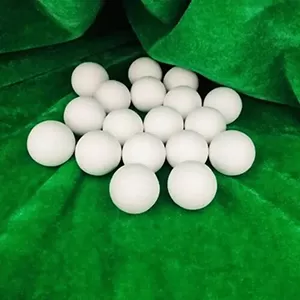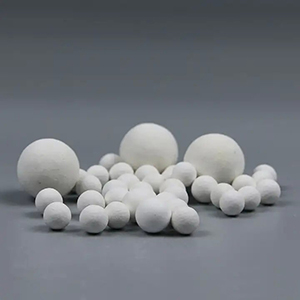The principles for proportioning grinding media (ball stones) in ceramic ball mills are critical guidelines to ensure efficient grinding, uniform particle size, and reduced energy consumption. These principles are based on material properties, mill specifications, and desired output characteristics. Proper proportioning balances the impact and abrasion forces, optimizing the grinding process for specific materials.

One core principle is matching the ball stone size to the feed material’s particle size. Larger ball stones are suitable for coarse materials, providing sufficient impact to break down large particles, while smaller ones are better for fine grinding, ensuring thorough abrasion of smaller fragments. A mix of sizes prevents over - grinding of fine particles and under - grinding of coarse ones, promoting uniform output.
The hardness and toughness of the material being ground also influence proportioning. Hard, brittle materials require harder ball stones with higher impact resistance to avoid excessive wear. Conversely, softer materials can use slightly softer media, reducing unnecessary energy expenditure and media replacement costs.
Mill capacity and rotational speed are key factors too. Higher - capacity mills often need a higher volume ratio of ball stones to material to maintain grinding efficiency, but this ratio must not exceed the mill’s load limit, which could increase energy use and media wear. Rotational speed affects the trajectory of the ball stones; faster speeds demand a proportion that minimizes ball - to - ball collision losses, focusing energy on material grinding.

The desired final particle size dictates the proportion of fine media. For ultra - fine outputs, a higher ratio of small ball stones ensures prolonged contact with particles, achieving the required fineness. In contrast, coarser desired sizes allow more large balls to speed up the initial breakdown process.
Consistency in proportioning is vital for batch - to - batch uniformity. Fluctuations in ball stone ratios can lead to inconsistent particle sizes, affecting product quality in industries like ceramics, pharmaceuticals, and mineral processing. Regular adjustment based on wear rates—replacing worn media to maintain the original ratio—preserves long - term efficiency.
Additionally, cost efficiency plays a role. While high - purity ceramic media may offer better wear resistance, their proportion should align with the material’s value and grinding requirements to avoid unnecessary expenses. Balancing performance and cost ensures the proportioning strategy is both effective and economical.
Adhering to these principles optimizes ceramic ball mill operations, enhancing productivity, reducing waste, and ensuring the final product meets strict quality standards.



